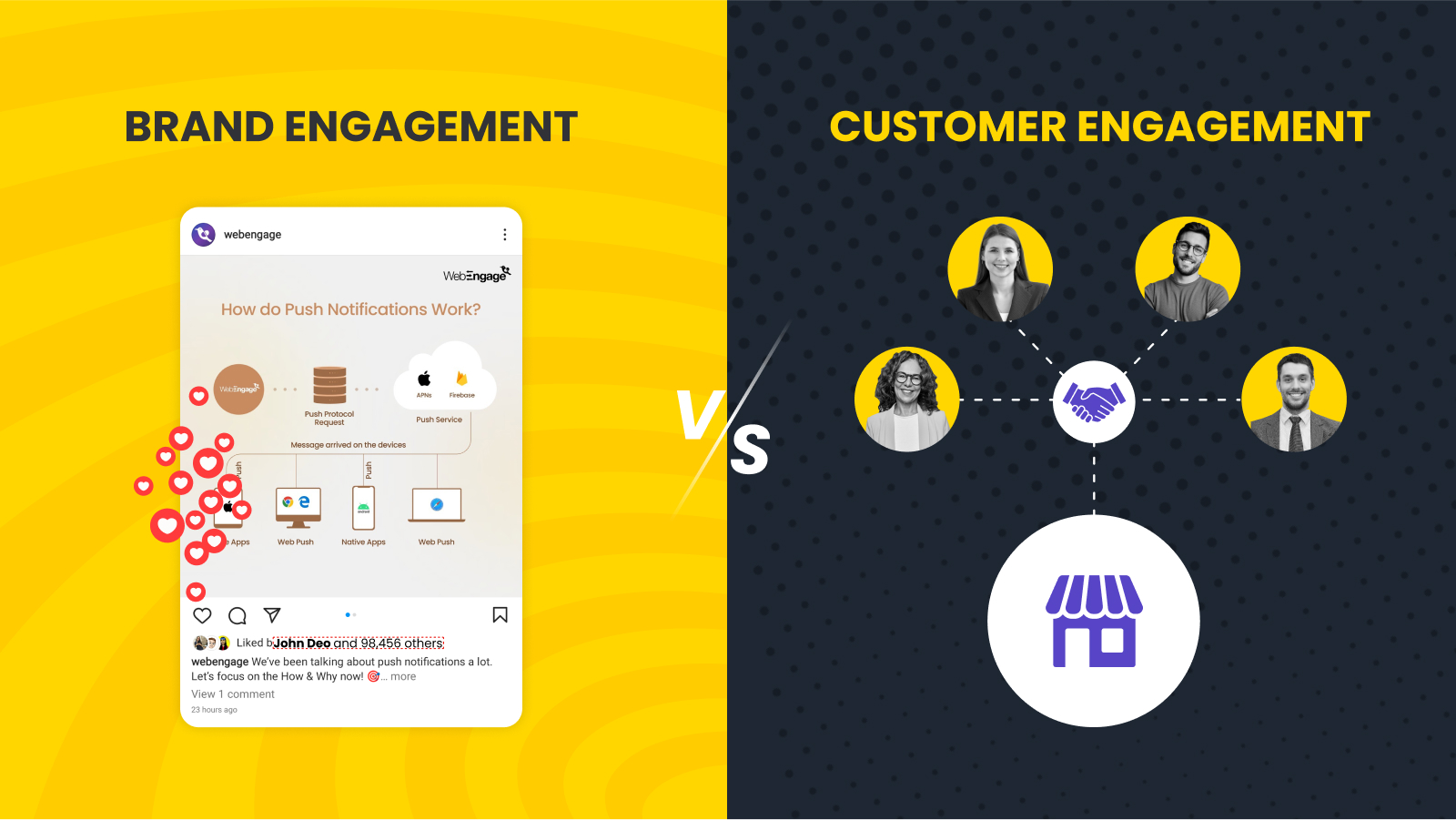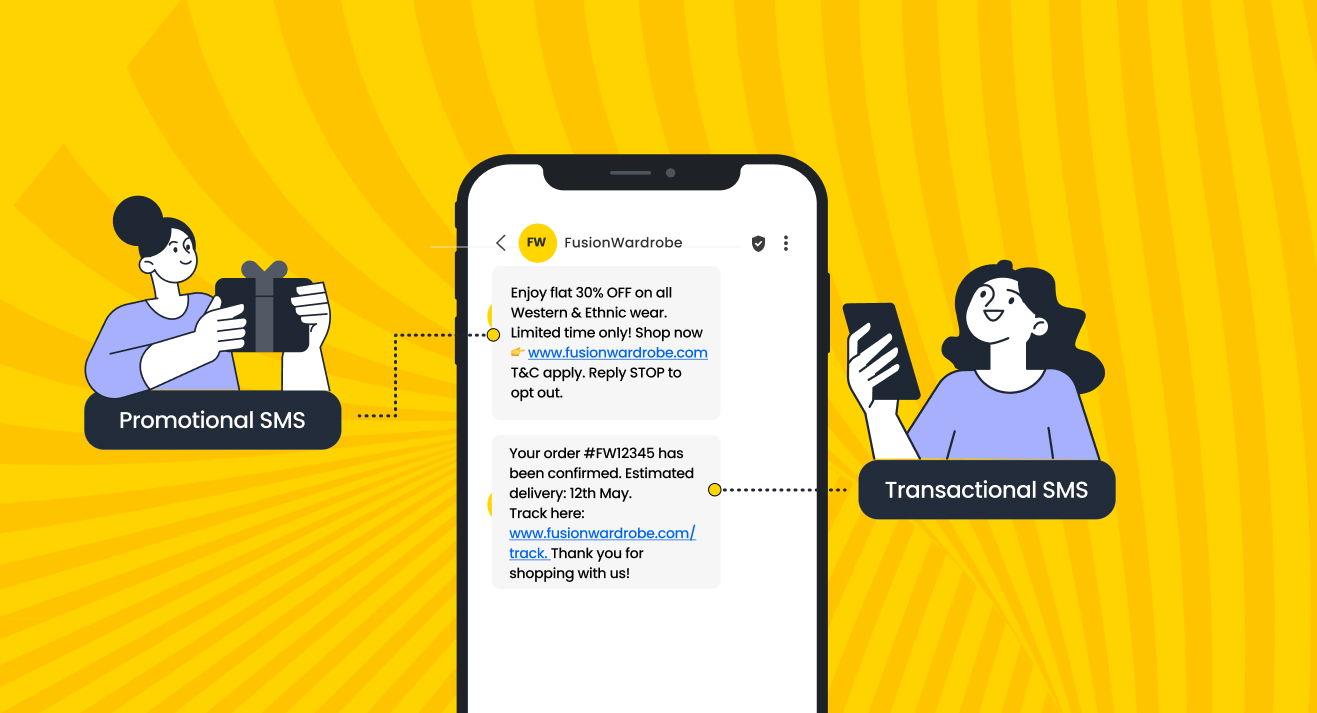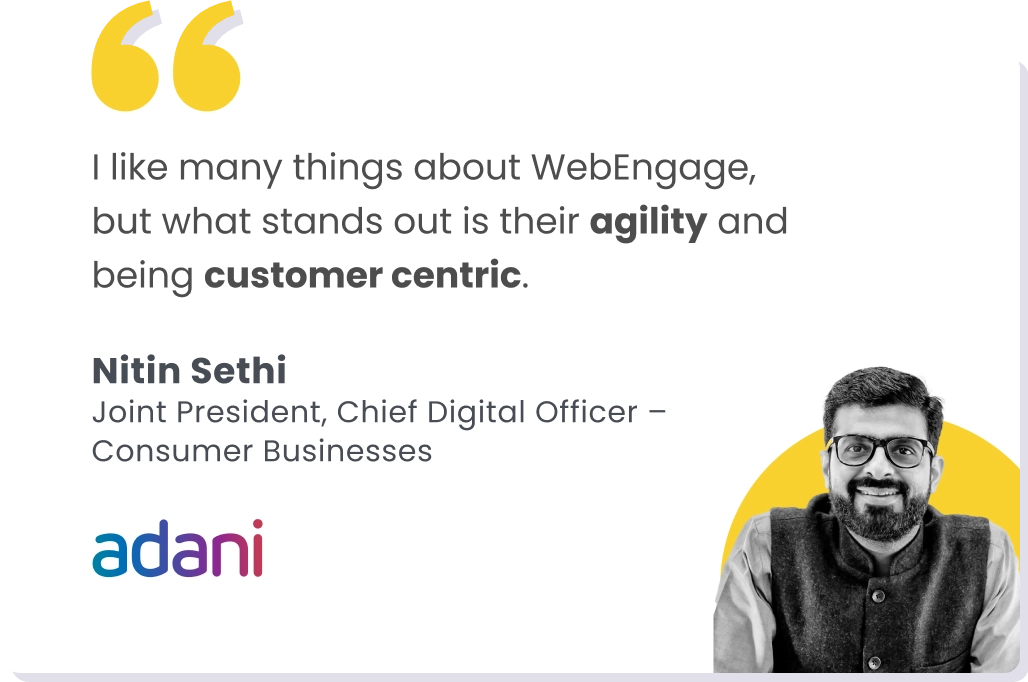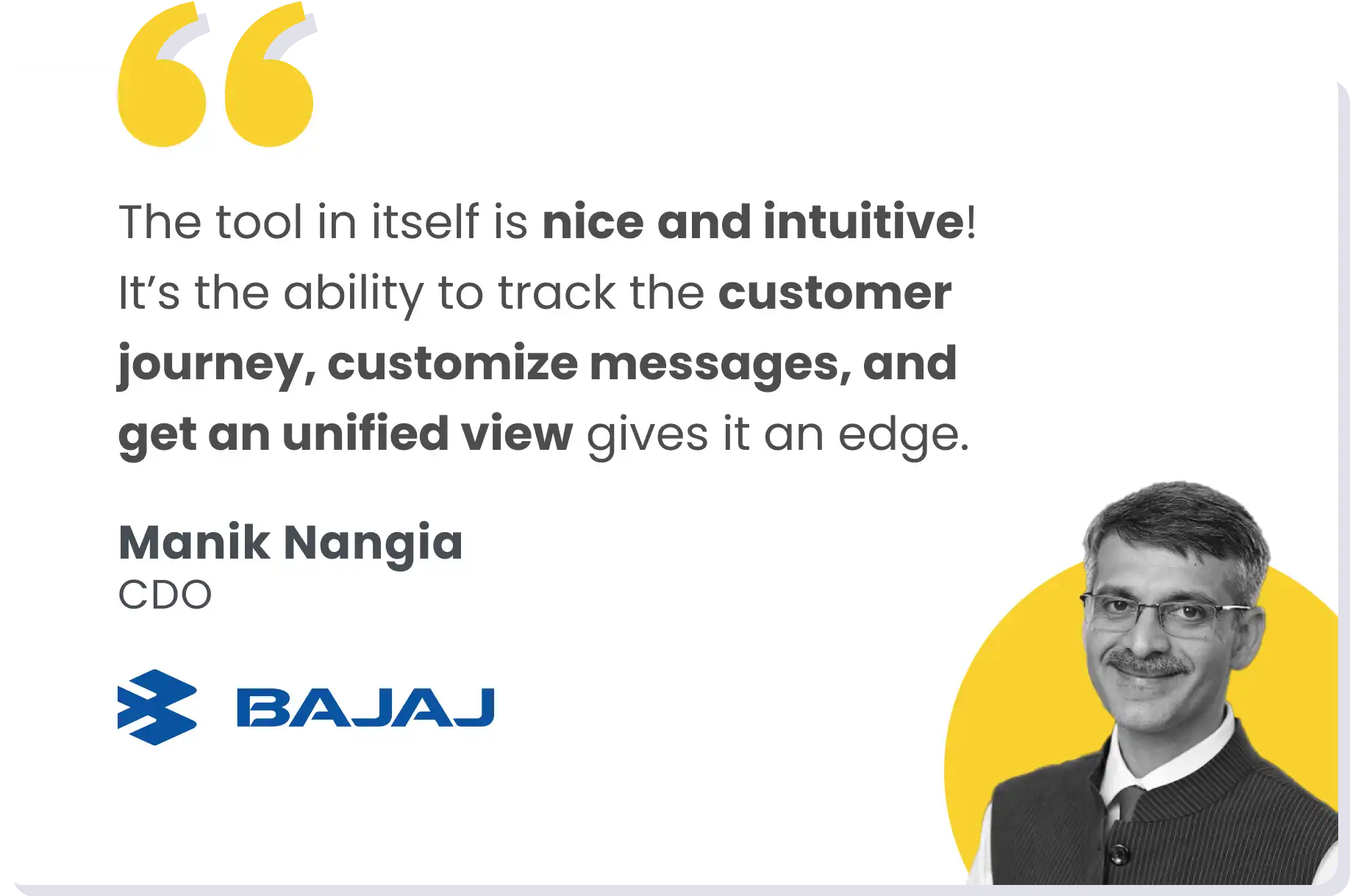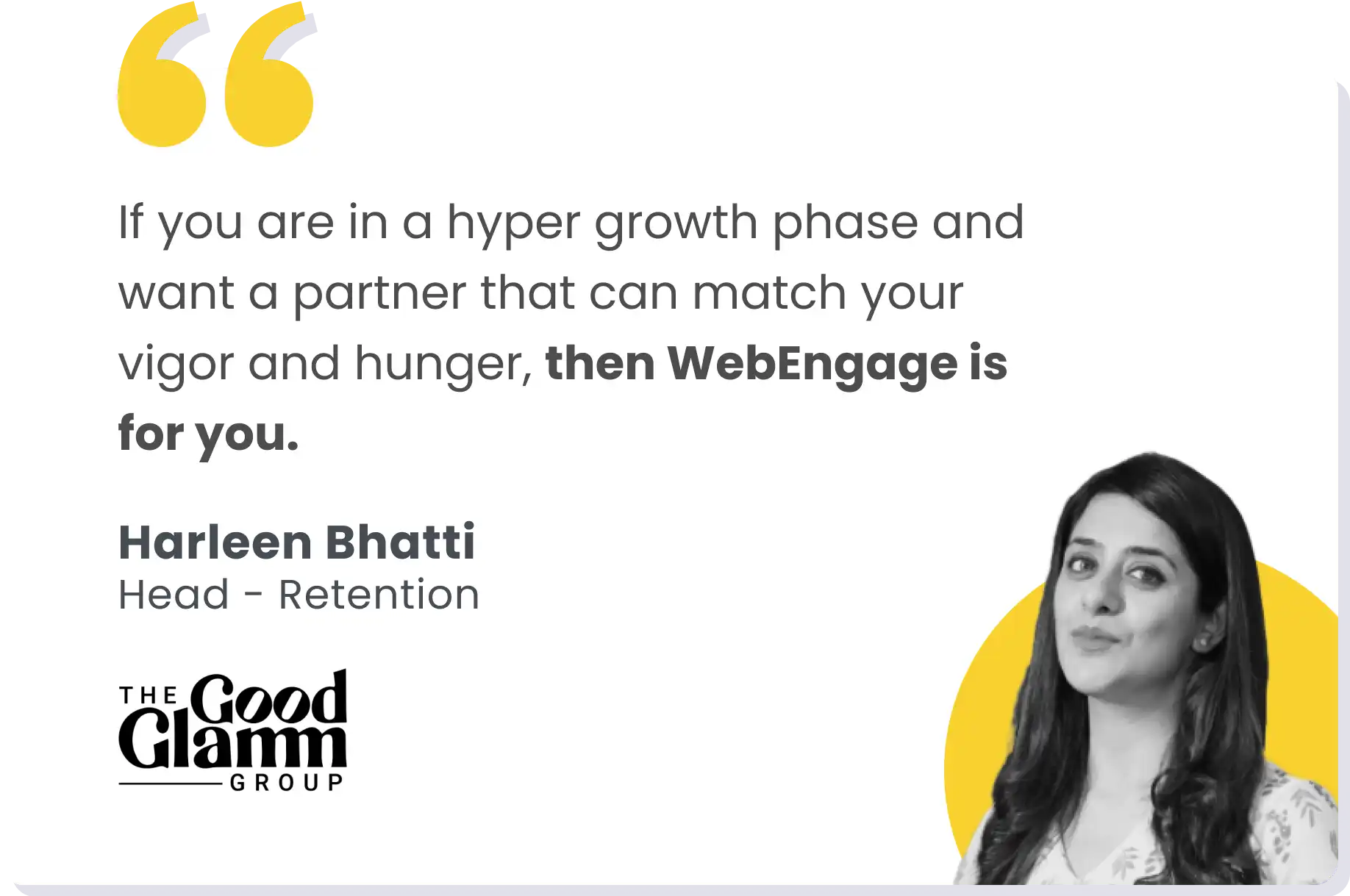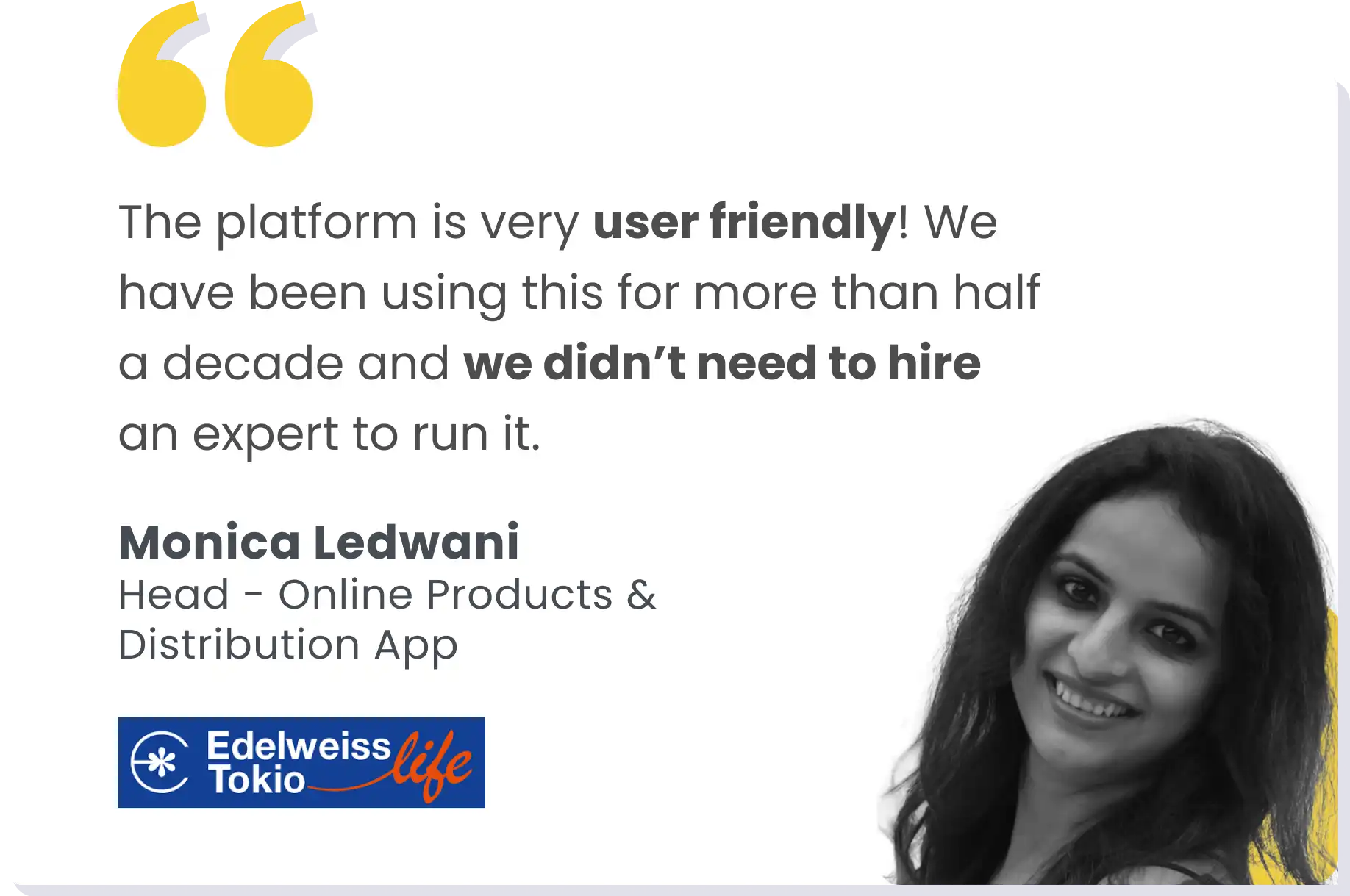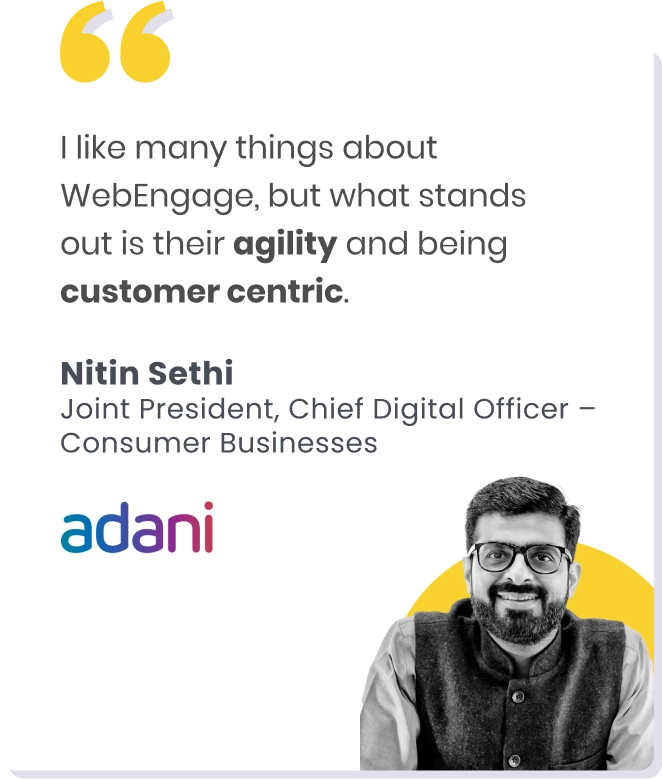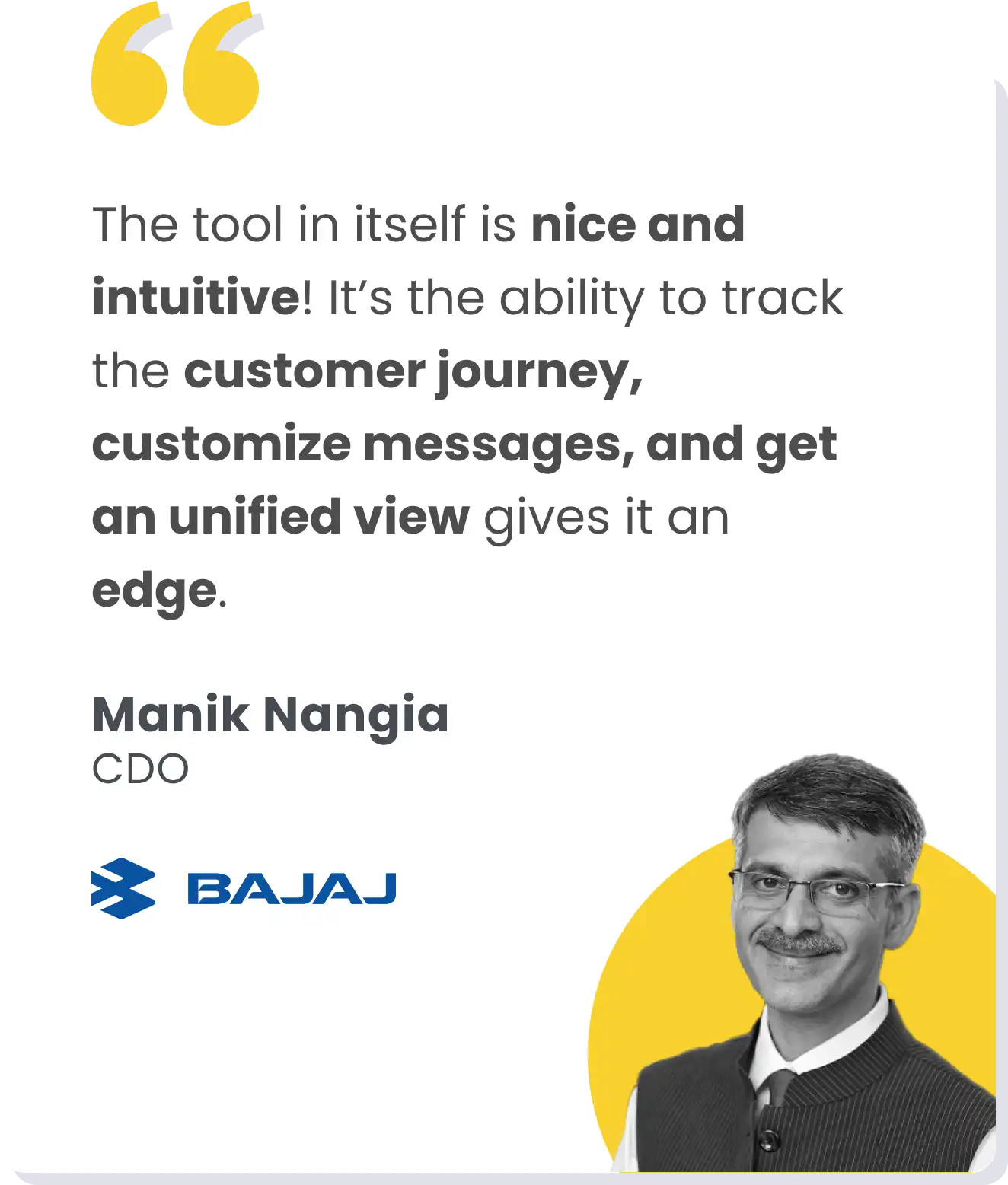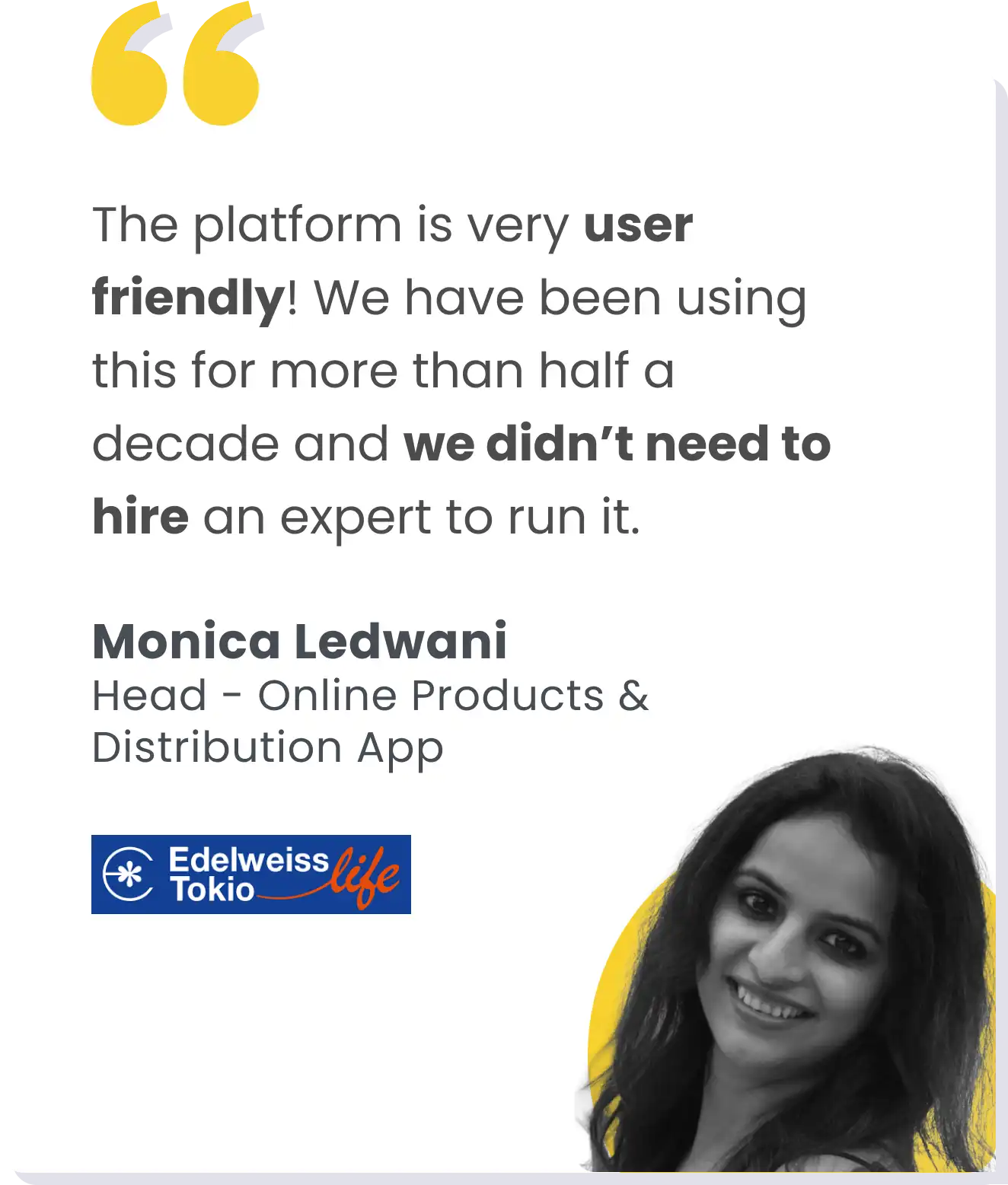How many times have you checked your mobile phone today? We could guess, and it’ll be inaccurate, but a study says an average smartphone user checks their phone 58 times a day.
That’s a big number, and we dare say it’s important for (mobile) marketers. Mobile marketing is gaining traction because marketing trends are growing.
At WebEngage, we’re known for our expertise in mobile marketing and its marketing automation, that’s why we’ve brought you the top tried and tested benefits of mobile marketing.
Let’s get straight into it:
1. Personalization
Is it a lie to say that this is the most gigantic advantage? The reality is, to most users, mobile devices aren’t just physical gadgets; they are within their minds. That is because it’s the same gadget used for keeping in touch with friends and family every now and then. Mobile devices, and the communication that occurs on them, have become part of daily life in a very personal manner.
This isn’t only one of the major advantages of mobile marketing; it needs to be part of your mobile marketing strategy. Personalization is an increasingly important trend across digital media. With mobile marketing, you have another sort of opportunity to communicate more personally with potential customers.
For example, we helped Mortantra, a leading jewelry brand in India, achieve an over 40% revenue increase with personalized web push notifications and other mobile marketing strategies, which helped grow their business.

2. Location-based Targeting
Every marketer knows the importance of geographical information in targeted marketing. You can use location-based targeting in your mobile marketing automation, reaching your customers at a very precise and relevant time. This will help you deliver very personalized messages and offers to your customers based on their current location.
Picture this: you run a local bookstore, and with mobile marketing, you can send a special discount to customers who are within a mile of your store. Knowing where your customers are will help you tailor your marketing strategies to their immediate needs and preferences, thus making the experience more personalized and effective.
Besides this, location-based targeting builds good relationships with customers because it allows them to feel recognized and valued. Such timely and relevant promotions or information from any business help increase footfalls and drive sales accordingly. This doesn’t just work for immediate business outcomes but also builds up long-term loyalty among customers who would appreciate the convenience and personalization of your offers.
3. Cost Effectiveness
If you’re looking to cut costs for marketing, you should consider mobile marketing then. Unlike other forms of traditional marketing channels, mobile marketing can be more effective when trying to reach a wider audience at a minimized cost.
Messaging, push notifications, or in-app advertising can help you communicate with a large audience without the extensive costs of print or TV advertisements. For example, a small boutique can do an SMS marketing campaign announcing new arrivals, saving money but increasing its reach.
Also, mobile marketing ensures that it targets the audience with precision, hence giving value for money spent. Customer data and behavioral analysis allow your strategies for campaigns with different metrics counts. The precision that comes with mobile marketing not only improves ROI but provides an opportunity for small businesses to also compete effectively with bigger competition.
4. Seamless Customer Experience
Mobile marketing will also help you create harmonious and engaging experiences for customers using the distinctive capabilities of each mobile device. For companies with mobile applications, offering intuitive interfaces can make every touchpoint easy for users, from browsing to buying.
Easy navigation and personalized content, at the forefront of every feature, make sure that anything a user may look for is accessible in minimum time and with minimum effort. Incorporating mobile marketing can also help these companies include interactive elements, such as augmented reality or gamification, to enrich the user experience and create deeper mobile engagement.
Companies can offer value-added services, like personalized recommendations or real-time support, whereby they anticipate and satisfy customer needs much more easily. All these factors contribute to improving not only the experience but also trust and loyalty for customer retention.

5. Access to Real-Time Data
Data is the real deal when it comes to any form of marketing, and with mobile marketing, you have access to real-time data and analytics, giving you a better view of customer behavior while helping you fine-tune your marketing strategies. You will be able to track how the users are using your app (for app personalization) or responding to your notifications, thus providing the ability to drive data-informed decisions that further optimize your marketing efforts.
This will also mean that through real-time insight, you will be in a position to make the necessary adjustments to marketing campaigns immediately to respond quickly and efficiently to fluctuating customer preferences or market trends. You will learn which tactics work and which don’t by observing user behavior patterns and trends; these observations will definitely let you know how and where to allocate your resources to strategies that really work.
Furthermore, real-time data allows for personalized marketing — segmentation of audiences and crafting messages for particular groups. It gives you insight into each customer’s path and preference to build a more personalized experience that they can relate to on a closer level. This level of personalization increases not only engagement but also strengthens customer relationships when users feel heard and appreciated.
Integration with Other Channels
When you use mobile marketing, integrating with other marketing channels makes it a lot easier to create a unified brand experience. You could connect mobile campaigns via social media, email, or in-store promotions which ensures consistent messaging across all platforms.
It becomes omnichannel this way: as you keep coordinating across multiple channels, you can improve the brand message, amplifying its impact and reach. This results in not just increased brand recognition but a better customer experience wherein every point of interaction flows from and builds upon the last.
Also, when integrated into other channels, mobile marketing lets you have an end-to-end view of customer behavior at different touchpoints. That holistic view enables you to segment your customers with more information and target them more accurately for your marketing messages to hit the mark. Having a good experience across all marketing touchpoints pushes customers toward more meaningful engagement, you will end up with customers who want to engage your brand even more.
7. Social Media Integration
This is also not only a benefit but part of your mobile marketing strategy. According to the 2023 Global Statshot Report, there were 4.95 billion social media users, social media is an important touchpoint with which to get in contact with your audience through mobile.
The average user spends approximately 2 hours and 27 minutes daily on social media, a fact that underlines the importance of it when talking about consumers’ digital behaviors. This, in turn, equips brands with better connectivity for driving brand awareness and conversions directly through mobile channels.
Social media, on the other hand, empowers mobile marketing with deeper and broader engagement and influence. A positive brand experience on social media would make 78% of consumers more likely to purchase. Photo and video-sharing platforms like Instagram and TikTok are most effective in reaching GenZs because users of this target audience depend on mobile devices for social interaction and product discovery.
Mobile marketing will help you tap into the resources of social media. Neemans, a leading shoe brand in India, uses its Instagram to reach more people even while using our mobile marketing features at WebEngage.
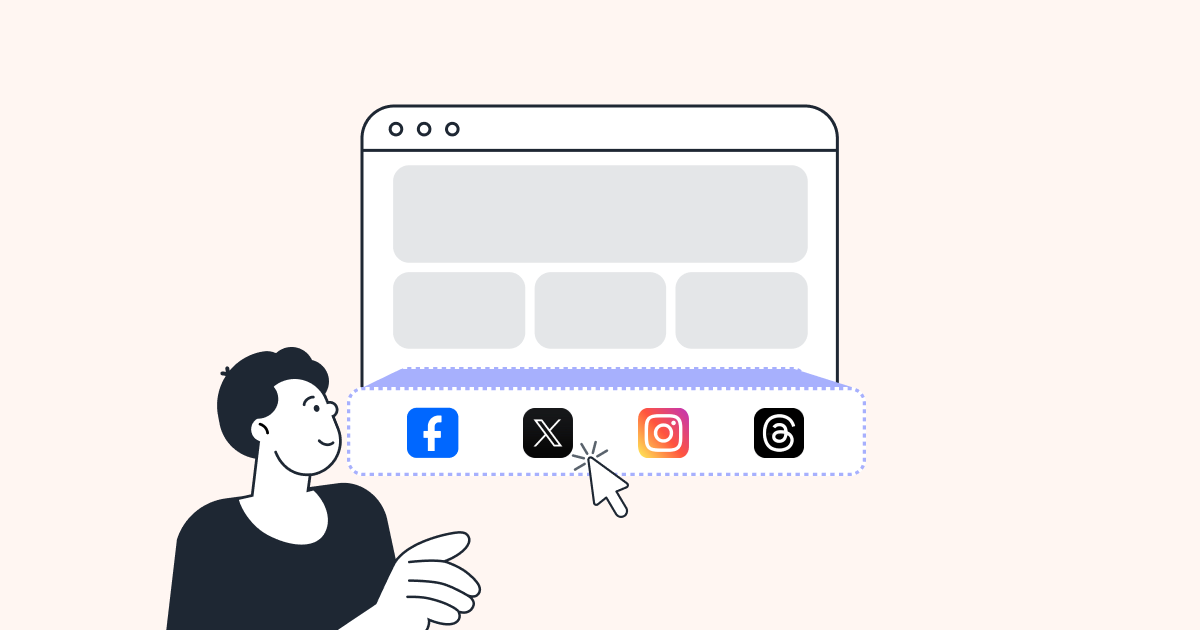
8. Better User Engagement
With mobile marketing, you can dare to imagine the fact that reaching out to customers directly, no matter where they may be, will work out. Messages, offers, or updates can be directly sent to their mobile devices. For instance, if a person is a regular customer of any particular coffee shop, a notification for a morning discount should reach the customer just when he or she wakes up and your store can become the first stop that day.
This line of communication not only draws immediate attention but also carves out a sense of affinity and loyalty. You can use their analytics to determine their preferences and monitor behaviors so that every touch is relevant and valued. Mobile push notifications, in-app messages and even SMS can be a channel for important alerts to the users.
With mobile marketing, you can also add interactive engagement through features like surveys, polls, or requests for feedback that call for customers to participate actively in your brand’s story. This kind of two-way communication can build customer relationships and provide good insights into customer engagement and expectations.
9. Convenience to Your Target Audience
It’s a known truth that mobile marketing has an unparalleled convenience that is offered to the target audience — everything is available — an offer or service at their fingertips. Users want to feel in charge and partake in marketing on their own terms and timings, this is why mobile marketing is done with a lot of caution.
The fact is that convenience translates into more satisfaction for the customer because a user can easily browse, buy something, or reach support without being “chained” to the desktop. For retail eCommerce, it could be an application that lets customers quickly check inventory and reviews, then finish off with a transaction with just a few taps – on the go.
Convenience here not only improves the whole experience of shopping but also guarantees its repetition since customers appreciate the ease and accessibility of mobile interaction. Mobile marketing brings a level of convenience that gives customers a sense of identification and a feeling of thoughtfulness from the brand that meets them where they are, both physically and contextually.
10. Micro-Moment Targeting
And to the last benefit we will mention here, capitalizing on “micro-moments,” simply means the brief instances when consumers turn to their mobile devices for quick information, decision-making, or action. These moments are important in marketing because they represent opportunities to provide immediate value and influence consumer behavior.
With mobile marketing, you’re helped to anticipate these micro-moments, so you offer incredibly relevant content just at the time when your audience is in search of them.
For instance, as a travel brand, you can show an ad to business travelers who are searching for late-flight deals or attractions to see in the local area during the business trip. This is what we’re helping brands do with our new product feature called relays.
This ability to engage their needs in real time creates a better experience with your brand and binds them closer to you. It positions your product as a helpful and responsive partner in their customer journey, creating a greater likelihood of retention.
As mobile devices continue to grow in their importance and daily use to the average consumer, (mobile) marketers who are building a strong strategy for mobile marketing automation will stand out from those who don’t prioritize mobile as a marketing channel.

What would it be for you?
If you’re ready to enjoy all these benefits and more, the team at WebEngage is offering you a demo for you to see how you can implement mobile marketing for your brand.
We have enabled 800+ brands to stop the guesswork and bring their marketing automation to the next level. Your brand could be next, take the demo here!




